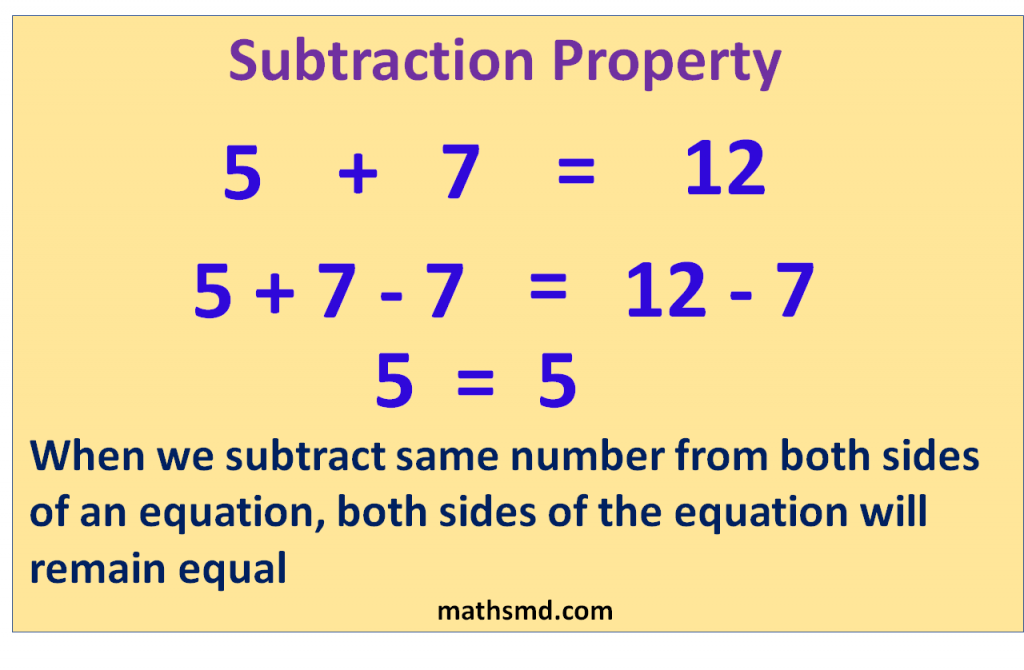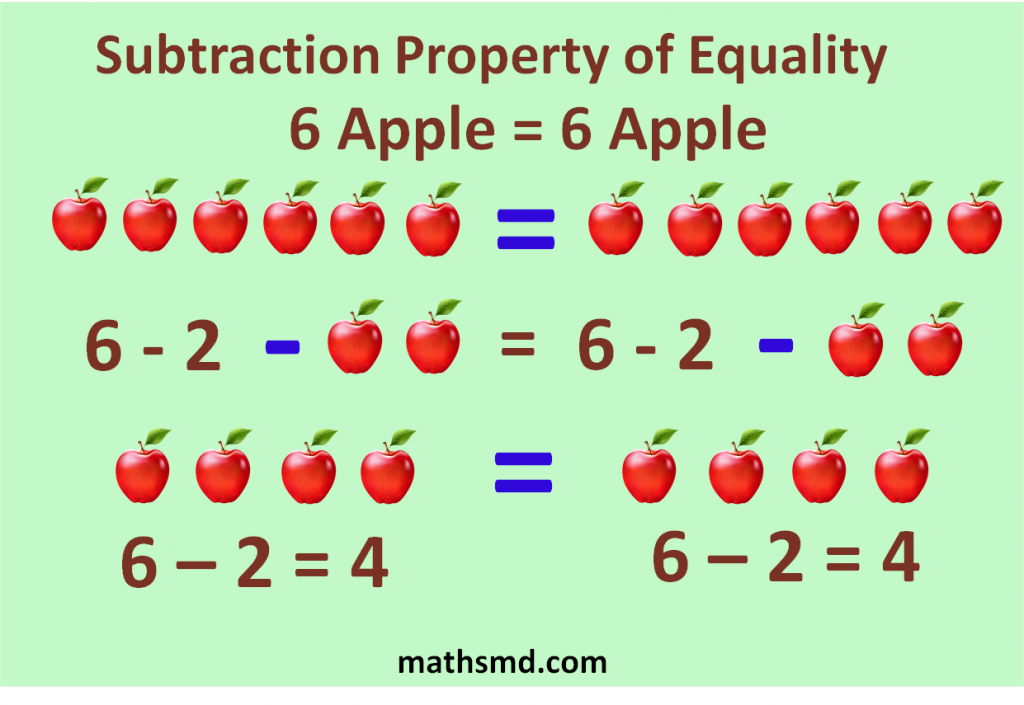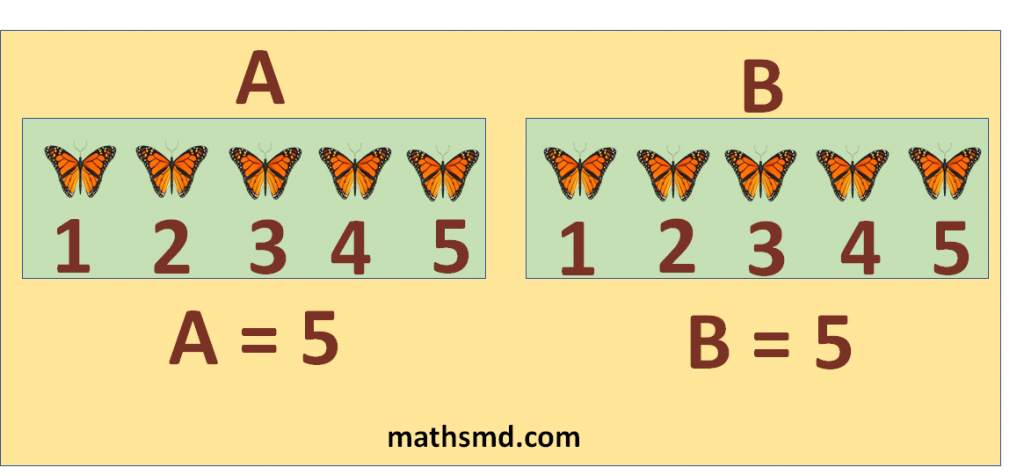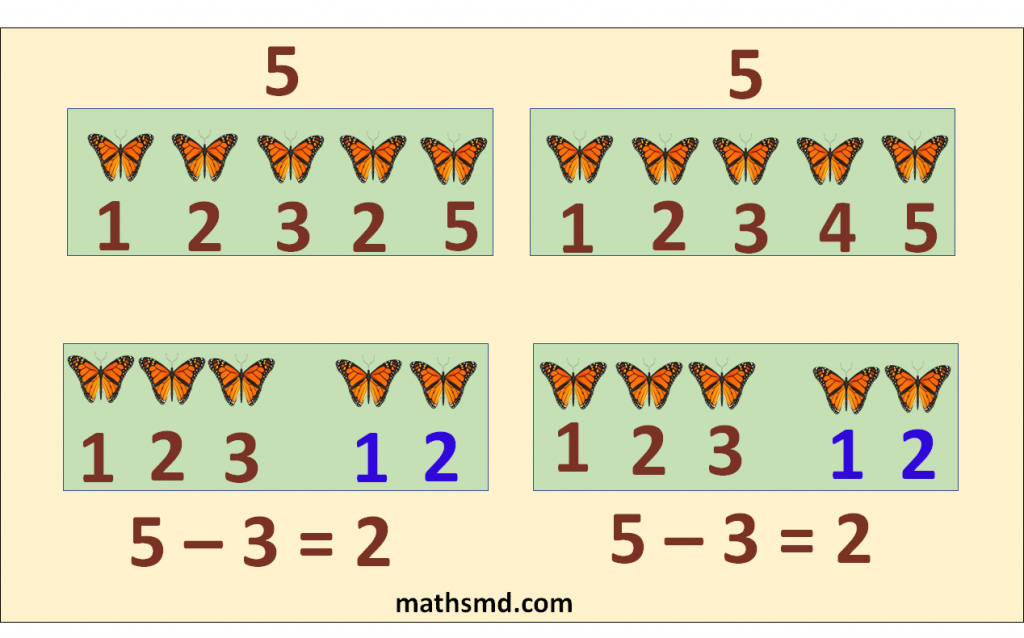Subtraction Property Of Equality – Definition – Examples
Equality – Subtraction Property
Definition:
Subtraction property of equality states that if using the same mathematical operation(same number is subtracted) on both sides of an equation, then both sides of equation will remain equal.

means in a equation, without changing the solution of the equation, same number may be subtracted from both sides.
This property is used to solve equivalent equations.
Example: x + 3 = 7
Here, x is unknown and we want to find the value of x. So if we subtract 3 from one side of the equation, we also subtract 3 from the other side of the equation to keep the equation the same.
x + 3 – 3 = 7 – 3
x = 4
Formula
The formula of subtraction property of equality is
If a = b
then, a – c = b – c

For example: If we have 2 sets of apples and both sets have 6 apples, we want to eat 2 apples from 1 set.

So we would also have to eat 2 apples from the other set of apples to keep them the same.
We have to do same to both sides of the equation.
Example: Here, A and B are two sets of butterflies. Set A have 5 butterflies and set B also have 5 butterflies.

Now we remove 2 butterflies from both sets. We get 3 butterflies in both sets. So our equation is balanced, both sides have 3 butterflies.
